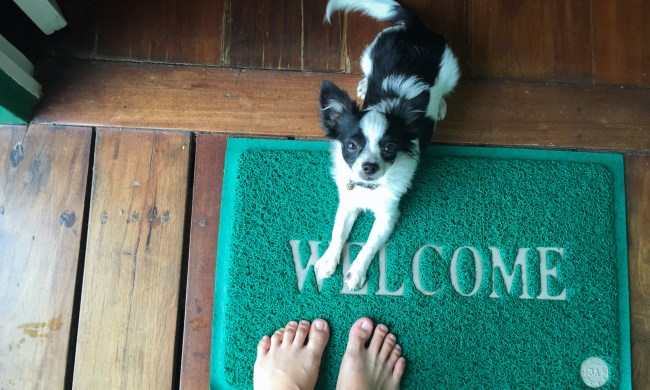
Dogs are beloved members of the family, and, like all family members, each pup has his own personality quirks. If your dog urinates and defecates in the house or chews up your shoes, furniture, or even parts of the door when you leave for work, he may be suffering from separation anxiety.
Contrary to popular belief, separation anxiety goes beyond a bit of whimpering and clinging. It’s actually a serious mental health issue that can make leaving your home a nightmare for you and your pooch. You’ve come to the right place if you’ve been wondering how to break a dog’s separation anxiety. Here’s how you can do it.
What is separation anxiety?

While we may consider separation anxiety to be a simple issue, it’s a complex problem that often causes pet parents to give up their dogs. There’s no single, specific cause for separation anxiety, but it may be triggered by a variety of life changes, such as:
- Death of a family member
- Moving from one home to another
- Being adopted from a shelter to a forever home
- Change in ownership
- Additions to the family, like new pets or a new baby
- Changes in daily routine
- Being left alone when your pup is used to company
Separation anxiety is a common mental health problem in dogs, with between 13% and 18% of dogs exhibiting symptoms. Because dogs are pack animals, they’re genetically hard-wired to remain with their pack, so they may become distressed when their human family members leave the house. Signs of separation anxiety include:
- Indoor accidents, even if your pup is housebroken
- Excessive panting
- Drooling and vomiting
- Compulsive behaviors
- Aggression
- Barking and crying
- Destructive behaviors
Signs of separation anxiety in puppies resemble separation anxiety in adult dogs, though your puppy may be more inclined to urinate and defecate in the home. Bear in mind that your little pooch isn’t trying to be naughty. He’s scared, and his small bladder size makes it difficult for him to control the urge to go inside the house.
How to break a dog’s separation anxiety

Training your dog out of anxious behavior can be complicated, but there are ways to make it easier. The most important step is creating a strong bond between you and your pup. When your dog trusts you and knows he can rely on you, he’s less likely to suffer from anxiety. Here are a few ways you can make dealing with separation anxiety easier on you and your dog.
1. Talk to your vet
If your dog’s separation anxiety is severe, you should speak with your vet about the possibility of medication and behavioral therapy. Nothing’s worse than knowing your dog is distressed and feeling powerless to fix it, but your vet can advise you on the best way to help your pooch.
2. Don’t make a big deal out of leaving the house
Dog behaviorist Cesar Millan, known as the Dog Whisperer, is a world-renowned expert on dealing with dogs and their more problematic behaviors. According to Millan, you shouldn’t speak to your dog, pet him, or make eye contact immediately before leaving the house. This lets your dog know that spending time alone isn’t something he should worry about.
3. Take your dog for a walk before you leave the house
Exercise doesn’t only benefit your dog’s physical health. Dogs who are physically active also are less likely to suffer from behavioral problems than sedentary pups. Taking your dog for a walk before you leave home helps him burn off excess energy, so he’ll be less inclined to take out his anxiety on your shoes and furniture when you leave home. You can also try walking him with a weighted vest or a compressive ThunderShirt, which has a calming effect on many dogs and can help tire him out more.
4. Give him a treat before you leave the house
Distracting your pup on the way out the door keeps him from focusing on his anxiety. Try giving him a puzzle toy filled with peanut butter to keep him occupied. Because dogs are intensely motivated by food, your pup may even look forward to being left alone since it means he’ll get a tasty treat.
Separation anxiety is more than naughty behavior and a constant need for attention. Dogs suffering from separation anxiety are confused and frightened because they’re separated from their pack leader: you. When in doubt, take your dog to see the vet. Your vet will make recommendations specifically tailored to your pup’s behaviors, and he may even prescribe medication that can help take the edge off your dog’s anxiety.



